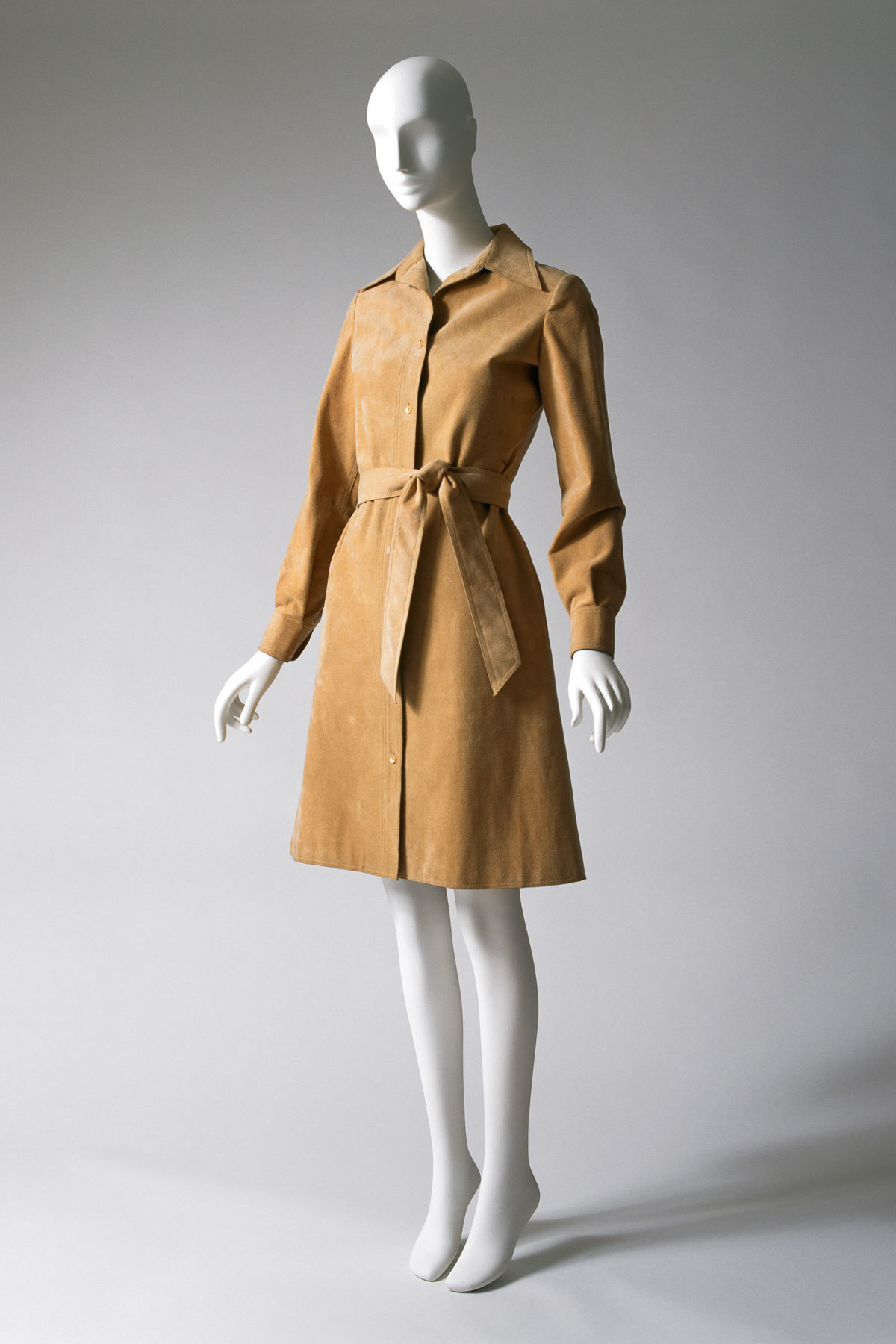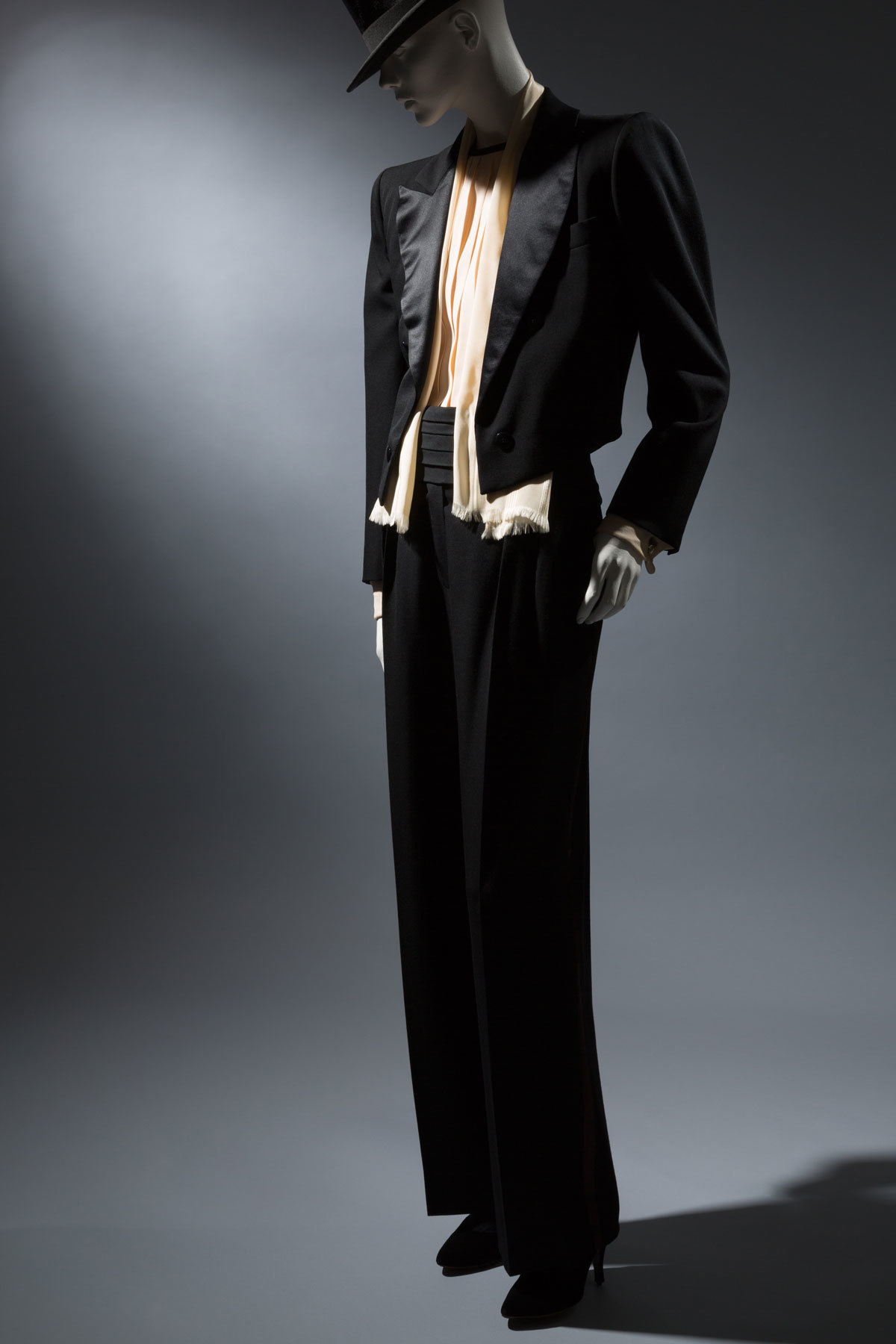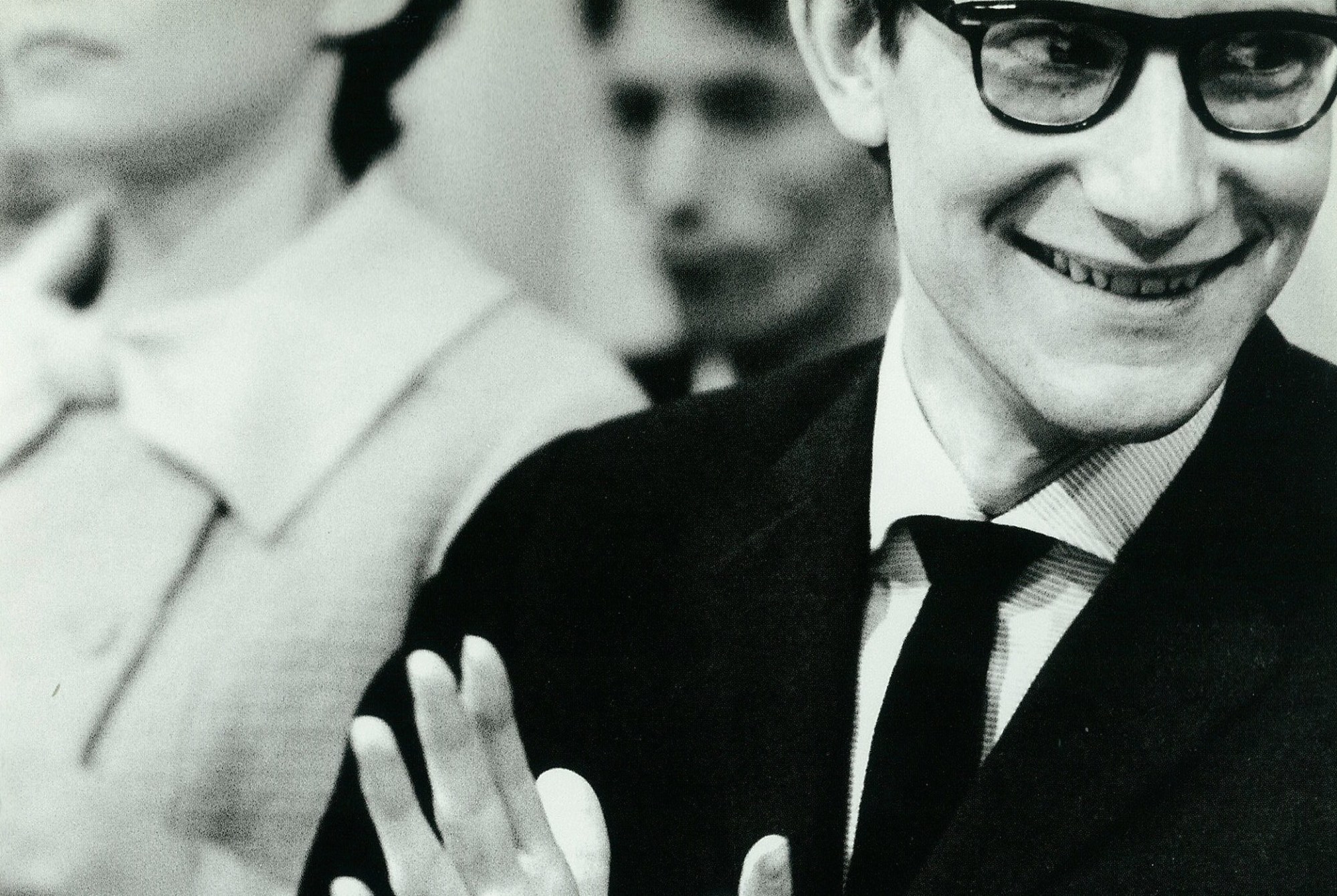A purple suede coat, silk crepe pajama sets, swooping necklines, and tie-dyed drapery are on display at the latest FIT exhibit YSL + Halston: Fashioning the 70s. We’ve become fascinated by the decade — American Hustle and Inherent Vice recently mined the decade’s iconic style — and the exhibition looked a whole lot like Frida Giannini’s Gucci show last season.
Of course culture keeps returning to the decade; the clothes are fun, outrageous, colorful, and sexy. This exhibit compares the two titans of 70s fashion, Yves Saint Laurent and Halston. Although both designers brought exoticism and historical pastiche to ready-to-wear, only one would remain a household name. “They knew each other, but they didn’t really hang out together. Both of them were celebrities in their time. Halston was the first fashion designer to be on the cover of Newsweek,” Fred Dennis, Senior Curator at the FIT Museum, explains.
Both designers started their careers in the 50s, flourished in the 70s and struggled in the 80s. Halston actually began by designing the iconic pillbox hat for Jacqueline Kennedy and continued on to dress Studio 54 celebrities like Liza Minnelli and Bianca Jagger, but in the 80s his company “crashed and burned,” Dennis explains. “He had so many licensing issues, he lost his name, tried to revive it but it didn’t work.” By the 80s the design vocabularies of both men had diverged — Halston became known as the streamlined, unisex minimalist while Saint Laurent became the fantastical colorist.

If the 70s are back in fashion, then so are the 30s, which inspired them. Those deep, glamorous necklines and halter-tops became popular during the early days of Hollywood. Low backlines were big when 20s dance culture made the back the focal point of an outfit. Halston was famous for his Madeleine Vionnet-inspired bias-cut gowns and separates.
So why in the 30s, then again in the 70s and again today? “I think the political and economic unrest is not unlike the end of the 60s,” Dennis comments. “There’s this whole controversy over right to life, the religious right rising, all of that creates tension. And if you look back to the 30s, the bias-cut gowns and the glamour, all that was in response to the depression. People couldn’t afford this glamour, but they could afford to go to the movies to get away from their grey life.”
The clothes, in perfect condition, are undoubtedly sexy. Necklines dipped down to the navel, and one jumpsuit with cutouts looks like something Rihanna might wear today. But the sari-like loose-fitting dresses made of draped fabric are alluring as well. “They have a sensuality and beauty and I think that’s a play on the old theme, the mystique of not seeing. Even though it’s covered it clings to the body,” Dennis says. Saint Laurent’s Le Smoking tuxedo (which borrowed from menswear) plus Halston’s Ultrasuede jackets (which were more unisex than masculine) have a certain sex appeal in their own way too.

The two designers defined 70s fashion, but one Saint Laurent piece reveals that designer’s particular kind of savvy. A strapless gown that drapes in a long column and gathers at the top was created out of a single trapezoidal piece of fabric, folded like an envelope around the wearer. Dennis said, “I made one of these to see how long it took. I made it in an hour. Saint Laurent did these in the 70s as made-to-order, which is so smart. You’re charging almost a couture price for something that takes an hour to make.”
Perhaps that was the difference between the two designers, whose muddied, muted colors and paisley prints are strikingly similar in the display cases. One of them had a business strategy, and selling clothes has always been the point.
Credits
Text Austen Leah Rosenfeld
Photography Victor Soto
